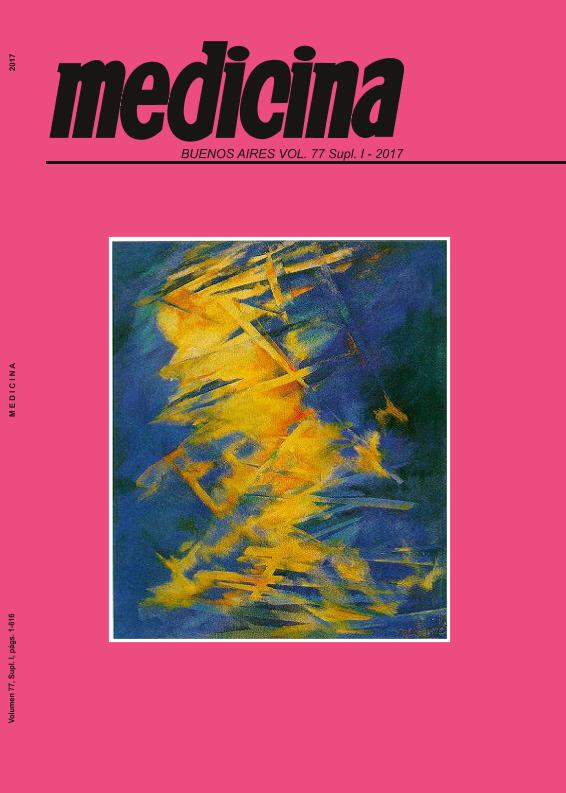Evento
Contribution of accessory subunits to heteromeric serotonin type 3 receptor function
Tipo del evento:
Congreso
Nombre del evento:
Reunión Conjunta de Sociedades de Biociencias; LXII Reunión Anual de la Sociedad Argentina de Investigación Clínica; LII Reunión Anual de la Sociedad Argentina de Investigación Bioquímica y Biología Molecular; LXV Reunión Anual de la Sociedad Argentina de Inmunología; Reunión de la Sociedad Argentina de Andrología; XLVI Reunión Anual de la Sociedad Argentina de Biofísica; XIX Reunión Anual de la Sociedad Argentina de Biología; XLIX Reunión Anual de la Sociedad Argentina de Farmacología Experimental; Reunión Anual de la Sociedad Argentina de Fisiología; Reunión de la Sociedad Argentina de Hematología y XXIX Reunión Anual de la Sociedad Argentina de Protozoología
Fecha del evento:
13/11/2017
Institución Organizadora:
Sociedad Argentina de Investigación Clínica;
Sociedad Argentina de Investigación Bioquímica y Biología Molecular;
Sociedad Argentina de Inmunología;
Sociedad Argentina de Andrología;
Sociedad Argentina de Biofísica;
Sociedad Argentina de Biología;
Sociedad Argentina de Farmacología Experimental;
Sociedad Argentina de Fisiologia;
Sociedad Argentina de Hematología;
Sociedad Argentina de Protozoología;
Título de la revista:
Medicina (Buenos Aires)
Editorial:
Fundación Revista Medicina
ISSN:
0025-7680
e-ISSN:
1669-9106
Idioma:
Inglés
Clasificación temática:
Resumen
5HT3 receptors are members of the Cys-loop receptor family that mediate fast excitatory transmission in central and pe- ripheral nervous system. Five different subunits (AE) have been identified in humans, and most of them have multiple isoforms. It is known that the A subunit can form functional homomeric (5HT3 A) and heteromeric receptors with the B subunit (5HT3 AB). Here we combined single-channel and macroscopic current recordings to de- termine if the other 5HT3 subunits (C, D or E) can also combine with the A subunit to form heteromeric receptors. After co-expression of the A subunit with each of the tested subunits, single-channel events with different amplitudes to that of 5HT3 A receptors were detected. From the analysis of the single-channel amplitudes, the stoichiom- etry of each heteromeric receptor was inferred. The activation pat- terns of the heteromeric receptors elicited by 1030 μM 5HT showed long-activation episodes composed by openings in quick succes- sion. No statistically significant differences in the open durations were observed among the homomeric and the heteromeric A/C, A/D, A/E receptors. However, the EC50 values for 5HT, which were determined by whole-cell macroscopic recordings, were statistically different between heteromeric and 5HT3 A receptors. In silico studies provided insights into the contribution of the different subunits to the 5HT binding site. Our results demonstrate that all the 5HT3 subunits can combine with the A subunit to form heteromeric receptors, thus leading to a wide variety of receptors showing different functional properties. The functional characterization of different heteromeric 5HT3 receptors, which are expressed in different tissues, contributes to the develop- ment of selective therapies targeting this receptor family
Palabras clave:
SEROTONIN
,
CYS-LOOP
,
HETEROMERIC RECEPTORS
,
PATCH-CLAMP
,
SINGLE CHANNEL
Archivos asociados
Licencia
Identificadores
Colecciones
Eventos(INIBIBB)
Eventos de INST.DE INVEST.BIOQUIMICAS BAHIA BLANCA (I)
Eventos de INST.DE INVEST.BIOQUIMICAS BAHIA BLANCA (I)
Citación
Contribution of accessory subunits to heteromeric serotonin type 3 receptor function; Reunión Conjunta de Sociedades de Biociencias; LXII Reunión Anual de la Sociedad Argentina de Investigación Clínica; LII Reunión Anual de la Sociedad Argentina de Investigación Bioquímica y Biología Molecular; LXV Reunión Anual de la Sociedad Argentina de Inmunología; Reunión de la Sociedad Argentina de Andrología; XLVI Reunión Anual de la Sociedad Argentina de Biofísica; XIX Reunión Anual de la Sociedad Argentina de Biología; XLIX Reunión Anual de la Sociedad Argentina de Farmacología Experimental; Reunión Anual de la Sociedad Argentina de Fisiología; Reunión de la Sociedad Argentina de Hematología y XXIX Reunión Anual de la Sociedad Argentina de Protozoología; Buenos Aires; Argentina; 2017; 409-409
Compartir




